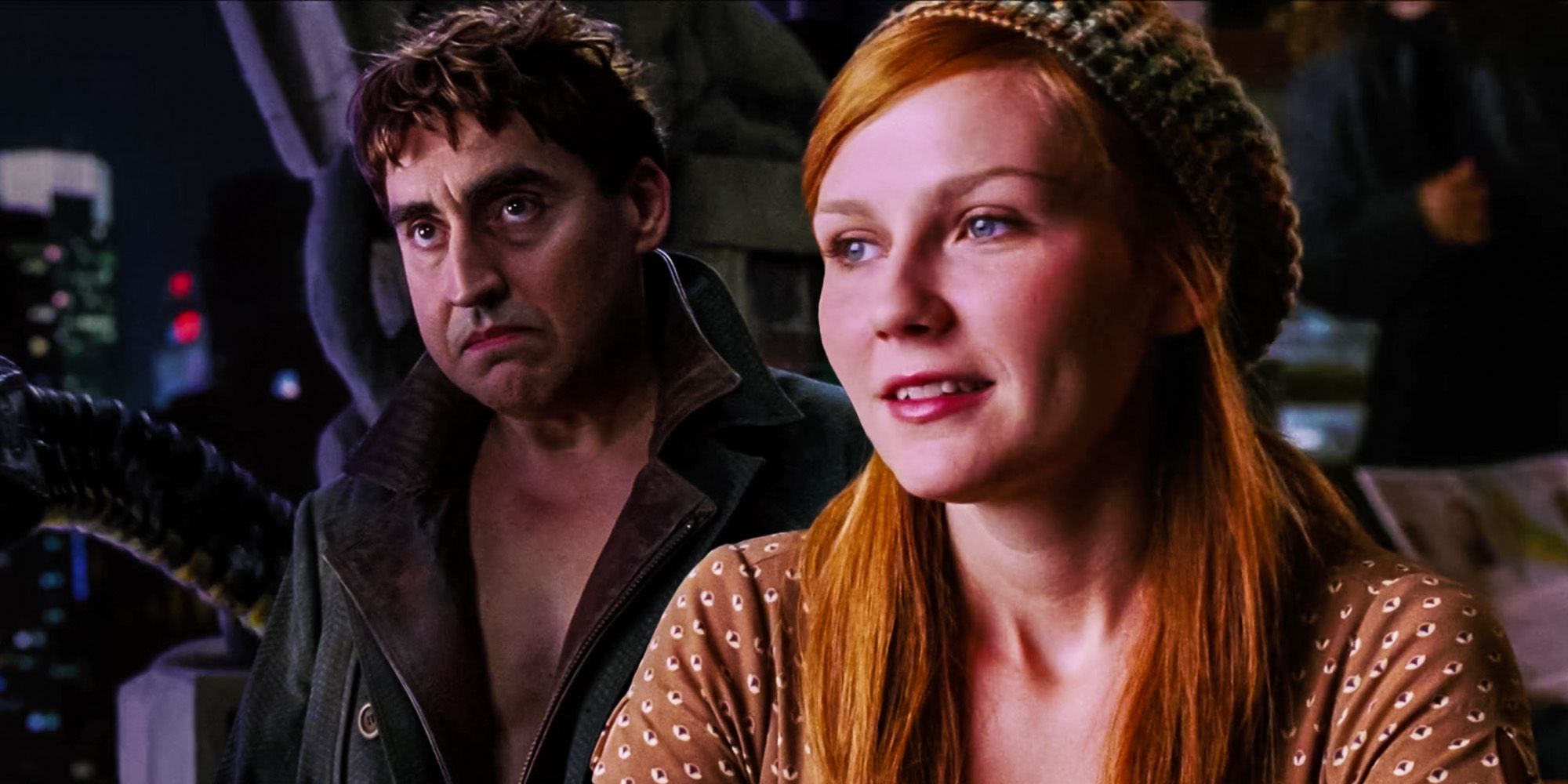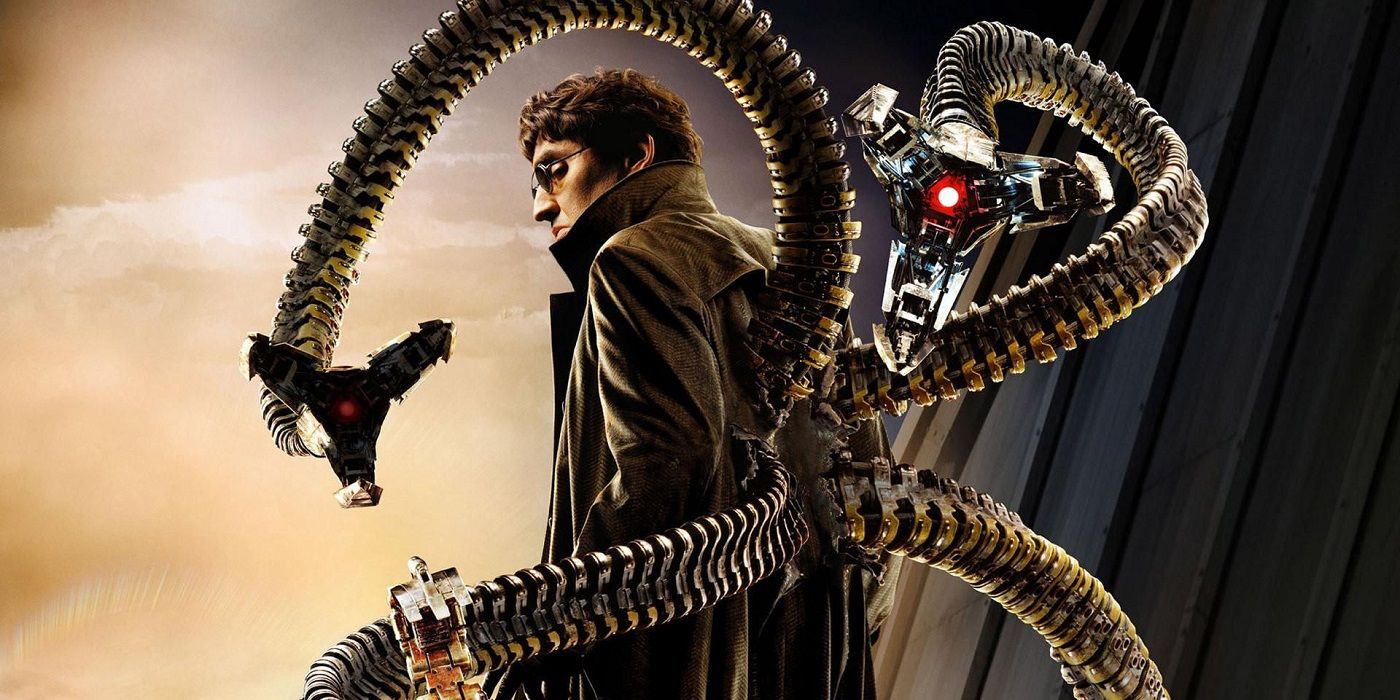Spider-Man 2 is considered among the best superhero movies ever made, but one of the original plans for the story included a completely different arc for Doctor Octopus, which would have not only killed Spider-Man 2 but also Spider-Man: No Way Home. Spider-Man is one of the most popular and beloved characters from Marvel Comics, which has led him to branch out to other media, most notably film. Spider-Man’s big-screen debut arrived in 2002 in Sam Raimi’s Spider-Man, introducing Tobey Maguire as Peter Parker, Kirsten Dunst as Mary Jane Watson, and James Franco as Harry Osborn.
The critical and commercial success of Spider-Man led Sony to make two sequels, with Spider-Man 2 standing out as the best of the trilogy and one of the best superhero movies ever. Set two years after the events of the first movie, Spider-Man 2 saw Peter Parker struggling to balance his personal life and his superhero duties, leading him to an existential crisis that strips him of his powers. Meanwhile, his mentor, scientist Dr. Otto Octavius (Alfred Molina), turns into the villain Doctor Octopus after a failed experiment leaves him neurologically fused to mechanical tentacles.
Spider-Man 2 was praised for its story, visual effects, and complex villain, and it became one of the most influential superhero movies. Molina’s Doc Ock was so well-received that he was brought back in Spider-Man: No Way Home and was received with arms wide open by the audience, and he was not only redeemed but he was also key in curing the rest of the villains, siding with the three Peter Parkers (Maguire, Andrew Garfield, and Tom Holland). However, had Raimi and company gone with one of their original ideas for Doc Ock’s arc in Spider-Man 2, they would have killed this movie and No Way Home, as they wanted him to be involved in a love triangle with Mary Jane and Peter.
Why Spider-Man 2's Doc Ock - MJ - Peter Love Triangle Was A Bad Idea
In a Spider-Man 2 behind-the-scenes featurette, producer Avi Arad shared that, when building the story of Doc Ock, there was the “classic approach” of Octavius being a revered scientist who developed something incredible, but they didn’t know where to go from there, and another approach that Arad wasn’t on board with was a younger Doc Ock who was infatuated with Mary Jane, thus creating a love triangle. Although Raimi’s Spider-Man movies are now classics of the superhero genre and continue to be some of the audience’s favorites, that doesn’t mean they are not flawed, and one of their biggest flaws is how they handled Mary Jane. Dunst’s character was there to serve as a love interest and damsel in distress and was given zero agency, and she was put into a love triangle with Peter and Harry in the first movie, though it was left aside in Spider-Man 2 only to add John Jameson into the mix, and it was picked up again in Spider-Man 3. Putting MJ into yet another love triangle but involving a villain like Doc Ock would have not only reduced MJ even more and hurt Peter and Octavius too but the movie in general, as it wouldn’t have given Doc Ock the same depth that his story ended up having.
Doc Ock’s motivations would have drastically changed had he been in a love triangle with MJ and Peter, which would have also affected his role in Spider-Man: No Way Home. Doc Ock was manipulated by the tentacles’ artificial intelligence, which led him to kill and finish his experiment at all costs, but adding a love triangle into the mix would have completely changed that, and his arc in Spider-Man: No Way Home wouldn’t have worked. Luckily, Raimi and crew kept working on Doc Ock’s arc for Spider-Man 2 and ended up bringing one of the most memorable and popular villains in the history of superhero movies.


